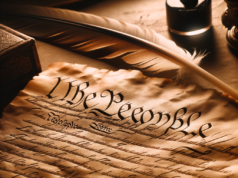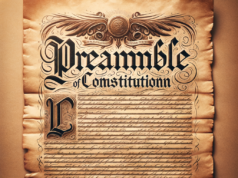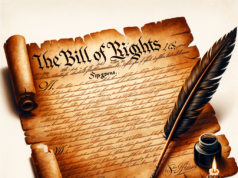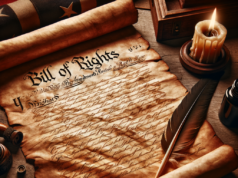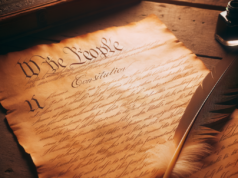
The ratification of the United States Constitution is an essential aspect of American history that helped to establish the federal government’s framework. However, the Constitution is not a self-executing document, and it required the ratification of at least nine states to come into operation. The state ratification process of the Constitution was an integral part of the creation of the federal government, and it remains a critical component of democracy in the United States.
Background
After the approval of the Constitution, each state appointed a ratifying convention to vote on whether to accept or reject it. These conventions met in each state capital in intervals between December 1787 until July 1788. The decision to have state conventions instead of the state legislatures vote on the ratification was controversial, but it helped ensure that the ratification process was more democratic.
The Virginia Convention was the first meeting to ratify the Constitution, and it was held in Richmond on June 2, 1788. Virginia was one of the most critical states in the ratification process because of its large population and political influence. Other states, such as New York and North Carolina, held out on ratification until the ratification of the Bill of Rights was added to the Constitution in 1791.
Ratification
The state ratification process required the approval of at least nine states to come into operation. The debate over ratification was fierce and led to many public debates across the states. Supporters of the Constitution, who are now known as Federalists, argued that the central government needed to be strong to keep the country together and promote economic development.
Opponents of the Constitution, known as Anti-Federalists, feared that the new government would be too powerful and that individual rights would not be adequately protected. The Anti-Federalists argued that the Constitution should include a Bill of Rights to ensure that liberty and freedom were protected.
Ultimately, the Federalists were successful in their efforts, and the Constitution was ratified by the required number of states in June 1788. The state conventions ratified the Constitution by a narrow margin, and the ratification process proved to be a contentious issue throughout the early years of the Republic.
Implications
The ratification of the Constitution had far-reaching implications for the United States. It established the framework for the federal government, which remains intact to this day. The Constitution also provided the foundation for what would become the United States’ system of democracy.
The Bill of Rights, which was added to the Constitution after ratification, guaranteed essential liberties and individual rights and remains a cornerstone of American democracy. The state ratification process demonstrated the importance of democracy, public debate, and compromise in the creation of a new government.
In conclusion, the state ratification process was a critical component of the creation of the United States federal government. The debates, public discussions, and compromises that were made during the ratification process helped establish a strong foundation for the American democratic system. The state ratification process remains an important example of the role that debate and civic engagement play in the creation of a democratic system, and it holds valuable lessons for the ongoing development of democracy around the world.
The ratification of the Constitution was conditional to the approval of 9 out of the existing 13 states of the United States. The representatives of less populous states like New Jersey were concerned about the eclipsing of their respective legislative power by the more numerous larger states.
The New Jersey Plan was created to alleviate this concern. Its unicameral legislative style would ensure that every State would be represented equally. Yet, larger states refused to accept that the size of a state’s population should not be taken into consideration in choosing representatives. As a result, many of the larger states rejected this legislative proposal.
The representatives of more populous states, like Virginia, demanded that the representation of a State be commensurate with its population. As a result, the Virginia Plan was created – a plan that offered bicameral legislation – in order to factor a state’s population into the number of representatives it was allowed. However, the Connecticut Plan combined these two ideologies, and as a result, smaller states like New Jersey and Delaware, as well as larger states like New York and Maryland, had agreed upon their respective State ratification of the Constitution.
Massachusetts, one of the most densely populated states, was initially unwilling to participate in the ratification of the Constitution. Their approval of the document was reliant on a clause introduced into the Constitution that ensured an amendment process, allowing the document to be modified in the future. When the Bill of Rights was established, Massachusetts approved of ratification of the Constitution.
Due to the fact that both Georgia and North Carolina were adamant about the preservation of slavery, should slavery have been abolished upon the beginning of the ratification process, both states threatened a refusal to agree? In order to quell both states, a gag rule regarding slavery was imposed; this rule solidified that due to its controversial nature, slavery, both its potential abolition, as well as its maintenance, would not be discussed for 20 years.
Virginia refused to enter its State approval in the initial ratification process of the Constitution. George Mason, a State representative from Virginia, was wary that the structure outlined in the Constitution was overtly similar to that of the British Monarchy – similarities that he had felt if accepted would undermine the Declaration of Independence, trading one monarchy for another.
The only State to neither participate in the ratification of the Constitution nor wholly approve of the Constitution was Rhode Island. Due to their smaller size, they felt that representation to which they were allowed as a result of the Articles of Confederation was definitively more substantial than proposed in the Constitution.



